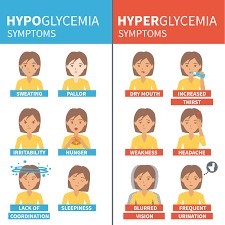A nurse is performing a physical assessment of a newborn whose mother used cocaine throughout the pregnancy.
Which of the following findings should the nurse expect?
Irritability.
Hypotonicity.
Decreased auditory startle response.
Increased head circumference.
The Correct Answer is A
Choice A rationale:
Irritability is a common withdrawal symptom in newborns exposed to cocaine during pregnancy. Cocaine exposure can lead to irritability, restlessness, and difficulty in consoling the newborn.
Choice B rationale:
Hypotonicity, or decreased muscle tone, is not a common finding associated with cocaine exposure in newborns. Cocaine exposure more commonly results in hypertonicity, where the muscles are tense and rigid.
Choice C rationale:
Decreased auditory startle response is not a typical finding associated with cocaine exposure. Newborns exposed to cocaine may have an exaggerated startle response, which is the opposite of the expected finding in this case.
Choice D rationale:
Increased head circumference is not a characteristic finding associated with cocaine exposure. Cocaine exposure is more likely to cause growth restriction, low birth weight, and microcephaly (small head size) in newborns.
Nursing Test Bank
Naxlex Comprehensive Predictor Exams
Related Questions
Correct Answer is A
Explanation
Irritability.

The rationale for each choice is as follows:
- A. Irritability: Correct. Irritability is one of the signs of hypoglycemia, which occurs when blood glucose levels fall below 70 mg/dL (3.9 mmol/L). Other signs include shakiness, sweating, hunger, headache, confusion, and blurred vision.
- B. Increased urination: Incorrect. Increased urination is one of the signs of hyperglycemia, which occurs when blood glucose levels rise above 180 mg/dL (10 mmol/L). Other signs include thirst, dry mouth, fatigue, nausea, and fruity breath odor.
- C. Vomiting: Incorrect. Vomiting is not a specific sign of hypoglycemia or hyperglycemia, but it can occur as a complication of either condition if left untreated or poorly managed.
- D.Facial flushing: Incorrect. Facial flushing is not a sign of hypoglycemia or hyperglycemia, but it can occur as a side effect of some medications used to treat diabetes, such as niacin or rosiglitazone.
Correct Answer is A
Explanation

Hospice care includes bereavement support for the family for up to a year after the client's death.
- B is incorrect because the hospice nurse does not administer pain medication, but rather teaches the family how to manage the client's pain at home.
- C is incorrect because respite care is one of the services that hospice provides to allow the family to take a break from caregiving.
- D is incorrect because hospice care does not aim to prolong life, but rather to provide comfort and quality of life for the client and the family.
Whether you are a student looking to ace your exams or a practicing nurse seeking to enhance your expertise , our nursing education contents will empower you with the confidence and competence to make a difference in the lives of patients and become a respected leader in the healthcare field.
Visit Naxlex, invest in your future and unlock endless possibilities with our unparalleled nursing education contents today
Report Wrong Answer on the Current Question
Do you disagree with the answer? If yes, what is your expected answer? Explain.
Kindly be descriptive with the issue you are facing.
